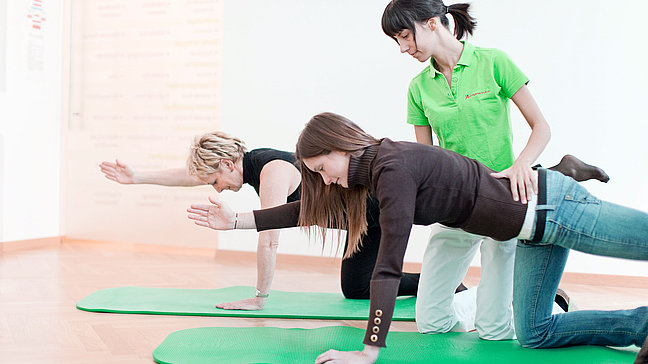
Pelvic floor training
Why is training the pelvic floor muscles important?
Prevention of urinary incontinence – exercises help improve bladder control and prevent involuntary urine loss.Improvement of sexual health – a strengthened pelvic floor increases sensitivity and enhances intimate perception.Support of pelvic organs – strong muscles prevent organ prolapse and associated discomfort.Recovery after childbirth – pelvic floor exercises promote regression and help avoid postpartum discomfort.Increase in body stability – the pelvic floor contributes to posture and stability of the spine.
Effective Exercises for the Pelvic Floor
1. Kegel exercises
- Tighten the muscles as if you were interrupting the flow of urine.
- Hold the tension for 5-10 seconds, then relax.
- Repeat the exercise 10-15 times, ideally in 3 sets per day.
- Make sure to only tighten the pelvic floor muscles – the abdomen and buttocks should remain relaxed.
2. The bridge (glute bridge)
- Lie on your back, place your feet hip-width apart on the floor.
- Lift the pelvis upwards while tightening the pelvic floor and buttocks.
- Hold the position for 5-10 seconds, then lower the pelvis again.
- Repeat the exercise 10-15 times.
3. Squats with pelvic floor tension
- Stand shoulder-width apart.
- Slowly squat down while simultaneously tightening the pelvic floor muscles.
- Slowly return to the starting position.
- Perform 10-15 repetitions.
4. Yoga exercise (butterfly pose)
- Sit on the floor with a straight back and bring the soles of your feet together.
- Let the knees fall outward and lean slightly forward.
- Consciously tighten and relax the pelvic floor muscles in this position.
- Repeat the exercise 10-15 times.
How to properly train the pelvic floor
- Regularity – daily training brings the best results.
- Targeted tension – it is important to activate only the pelvic floor muscles, not the abdomen or legs.
- Proper breathing – do not hold your breath, but continue to breathe evenly.
- Combination of exercises – static and dynamic movements provide the best effect.
- Be patient – initial successes are noticeable after 4-6 weeks of regular training.



